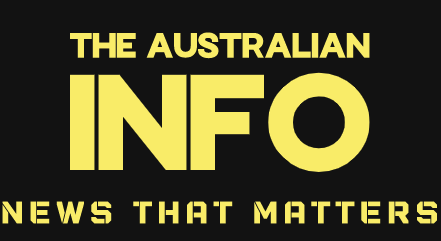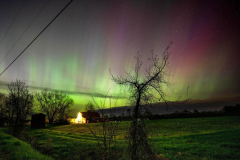
The northern lights appear in green, blue and pink paint brush strokes over a horse barn and pasture in Mercer, Maine on May 10, 2024. (Photo by Michael Seamans/Getty Images)
Getty Images
Where can I see the Northern Lights tonight? A rare forecast for a strong G3-class or severe G4-class geomagnetic storm by space weather experts could see the Northern Lights visible in northern skies from over 18 U.S. states overnight on Monday, Sept. 1 and Tuesday, Sept. 2, 2025.
Here’s everything you need to know — including what time the Northern Lights will be visible tonight, a Northern Lights map, and how to photograph the Northern Lights.
NOAA issued this update on Sunday, Aug. 31, 2025.
NOAA
Northern Lights Tonight: Forecasts And Alerts
The latest space weather forecast from the National Oceanic and Atmospheric Administration comes as the annual viewing window in the Northern Hemisphere — from September through March — kicks off.
It has a coronal mass ejection — a cloud of charged particles from the sun produced by a long-lasting solar flare — heading towards Earth, and destined to collide with its magnetosphere on Sept. 1 and Sept. 2.
“Periods of G2 (Moderate) storming are likely, with a chance for G3 (Strong) storm periods, late on Sept. 1 due to the anticipated arrival of the Aug. 30 asymmetric full halo CME,” reads a post from NOAA. A CME is a coronal mass ejection — a massive bubble of charged particles produced by a solar flare. A “full halo” CME is when it appears in images to expand in all directions. “On Sept. 2, periods of G3 (Strong) storming are likely, with a chance for G4 (Severe) storm periods, as CME influences continue,” continues NOAA. The culprit was a massive long-duration solar flare on Aug. 30.
The aurora viewline from NOAA for Monday, Sept. 1, 2025.
NOAA
Northern Lights Tonight: Where And When To See Aurora
The latest space weather models suggest that the CME may arrive — potentially sparking a G3-class geomagnetic storm — as it gets dark in North America on Sept. 1. Kp levels — an indication of how strong aurora can be — may reach around 5.67. However, they may go up a notch to 6.67 in the early hours of Sept. 2 as, potentially, a G4-class event occurs. NOAA’s forecast gives a 40% chance of a “strong extreme” storm.
According to SpaceWeather.com, auroras may be photographed in U.S. states as far south as Virginia, Missouri and Colorado. NOAA says some of the lower Midwest to Oregon.
U.S. states that may see aurora include Alaska, Washington, Oregon, Idaho, Montana, Wyoming, North Dakota, South Dakota, Nebraska, Minnesota, Iowa, Wisconsin, Illinois, Michigan, New York, New Hampshire, Vermont and Maine. U.S. states closest to the border with Canada will have the highest chance of seeing the aurora.
Note: Predicting the intensity and time of aurora displays is only possible when the solar wind hits NASA’s DSCOVR and ACE satellites a million miles from Earth — giving 20-50 minutes warning — so check NOAA’s 30-minute forecast.
How To Watch The Northern Lights On Monday
- Timing: Be outside after dark on Monday, Sept. 1. Auroras can flare unexpectedly, so check often.
- Where to Look: Face north and look for a whitish or greenish arc low in the sky — use a smartphone camera on “night





